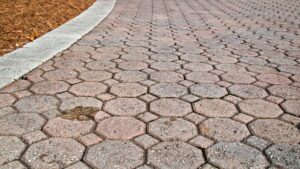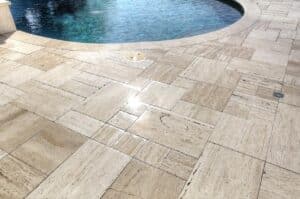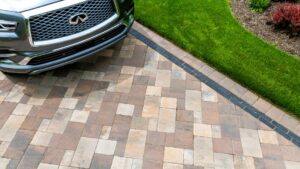In recent years, the hardscape industry has been going through some changes. Environmentally friendly options for products and projects have become a priority for many homeowners. For that reason, rubber stepping stones have grown in the eyes of the consumer.
This is because rubber is considered to be a much more environmentally friendly option. Rubber stepping stones can even be made from recycled rubber from tires and other rubber materials. However, things are not as simple as they seem.
A closer examination reveals that rubber stepping stones may not be the best investment when compared to their traditional counterparts, not even when taking into account the environmentally friendly aspect.
In this article, we will explore why rubber stepping stones fall short compared to regular stepping stones, highlighting considerations that homeowners should bear in mind, and explaining why the “benefits” of rubber pavers should be taken with a grain of salt.
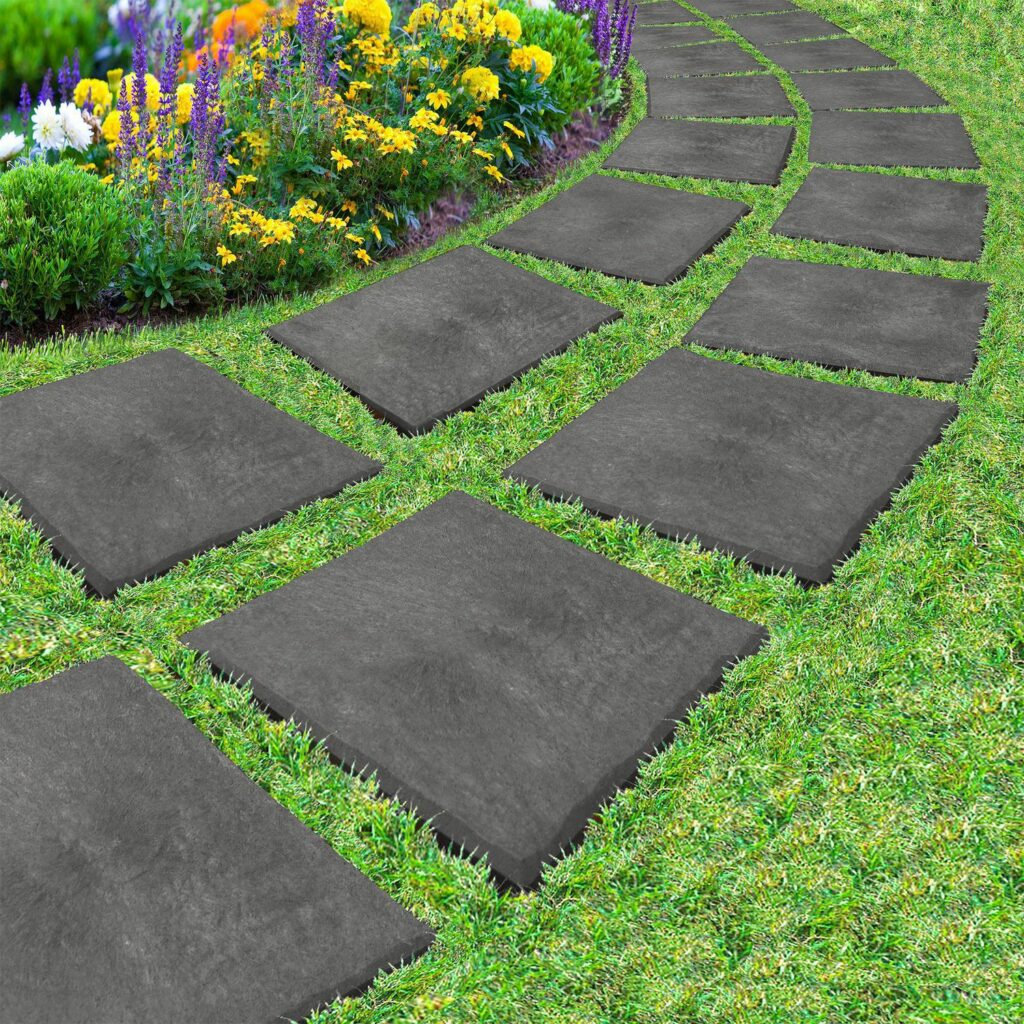
Rubber stepping stones: how are they made?
So first, let’s take our time to really understand what are rubber stepping stones and how they are made.
The first step in the manufacture of rubber stepping stones is to collect discarded rubber materials, especially old tires, which are a common source of recycled rubber. These tires are cleaned and processed to remove any debris, metal parts, or fabric.
The collected rubber is then shredded into smaller pieces using industrial machinery. This process helps break down the rubber into more manageable sizes, making it easier to work with during the manufacturing process.
The shredded rubber pieces are then mixed with binding agents, such as adhesives or vulcanizing agents, to create a more cohesive rubber compound.
Coloring agents can also be added at this stage to give the rubber its desired color. This step is crucial for creating consistent coloring throughout the stepping stones.
The rubber compound is then poured into molds of various shapes and sizes to create the stepping stones.
The molds can be designed to resemble natural stone textures, brick patterns, or other decorative designs. The molds are usually made from materials like silicone or other flexible materials that allow easy removal of the finished product.
Once the molds are filled, they are subjected to heat and pressure to compress the rubber compound and encourage the curing process. Curing helps the rubber material solidify and take on its final form. The duration and conditions of curing can vary based on the specific rubber compound used.
After the curing process is complete, the rubber stepping stones are allowed to cool down. Once cooled, the molds are carefully removed, leaving behind the finished stepping stones.
Is that really an environmentally friendly manufacturing process?
Surprisingly, not really.
The manufacturing of rubber stepping stones involves a lot of machinery and chemistry, producing waste that is not exactly the best for the environment.
Yes, the raw materials used in the process are recycled, but the manufacturing process itself is not better than any other paver or stepping stone in the market. In fact, it might even be worse.
For comparison, the manufacturing process of brick or concrete pavers actually takes less time and resources and produces less waste.
Rubber stepping stones got famous for being marketed as an environmentally friendly option due to the fact that their raw material comes from recycling processes. The thing is, concrete and brick can also be recycled, we just don’t talk about it enough.
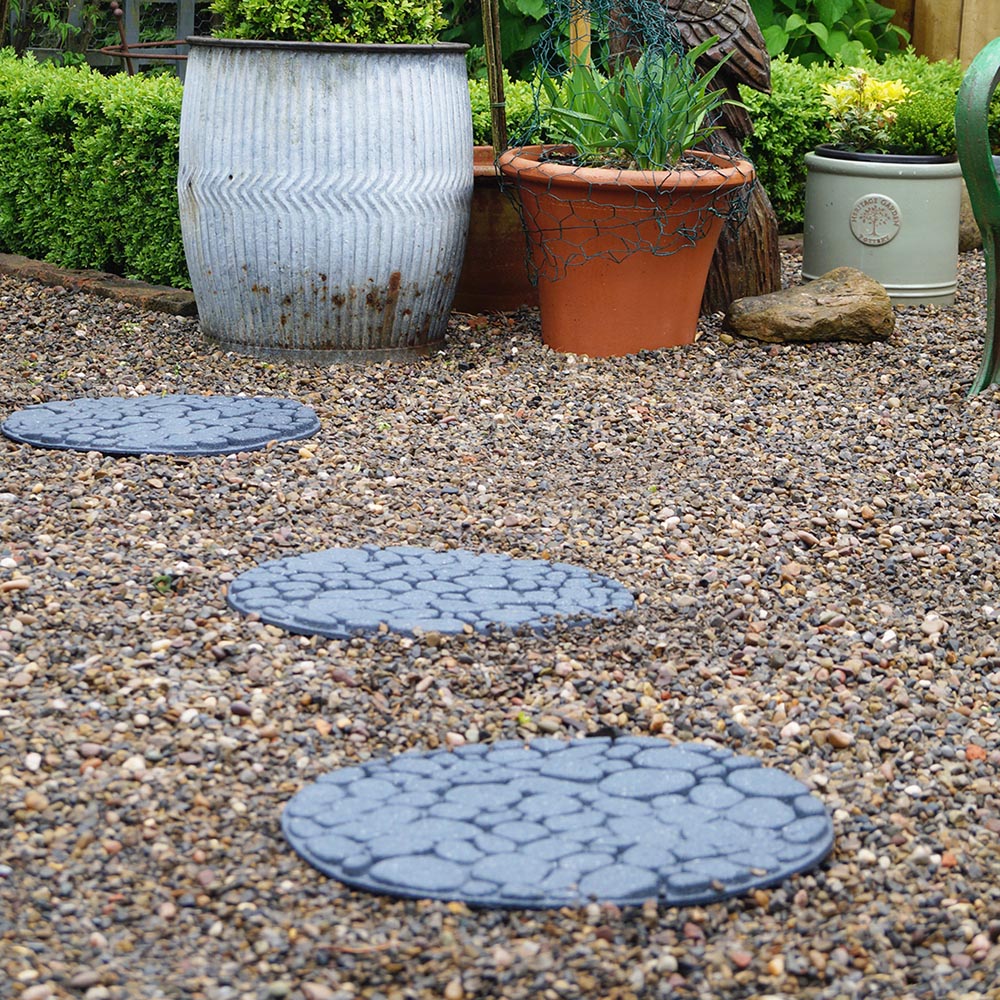
Debunking the advantages of rubber stepping stones
The main selling points of rubber stepping stones are how environmentally friendly and cheap they are.
We already debunked the environmentally friendly aspect, so now it’s time to talk about the claim that they are cheap. It is essential to understand that, in hardscape, the cost of things goes way beyond the upfront cost.
One of the primary concerns when investing in any hardscape element is its durability. Traditional stepping stones, which are typically made from materials like concrete, natural stone, or even pavers, offer robust durability and can last for decades.
On the other hand, rubber stepping stones, while initially appearing sturdy, often degrade more rapidly over time due to exposure to various weather conditions and UV radiation. This leads to cracking, fading, and a shortened lifespan, ultimately necessitating frequent replacements and undermining the very purpose of an investment.
Currently, high-end concrete pavers cost $10 per square foot on average, while rubber pavers are costing around $7 per square foot.
Concrete pavers can last for decades with proper care and maintenance, while rubber pavers will last two years tops. So you don’t need a lot of math to know which one is the better investment.
Maintenance challenges
Using hardscape elements that demand minimal upkeep is crucial to ensure a sustainable and enduring investment. When considering pathways and walkways, opting for traditional stepping stones emerges as an excellent choice due to their inherent low-maintenance nature.
These time-tested stones generally necessitate only occasional cleaning to eliminate accumulated dirt and debris. This simplicity in maintenance not only saves time and effort but also contributes to the longevity of the overall landscape.
But unlike their traditional counterparts, rubber stepping stones present a distinct set of challenges. While they might initially seem like an innovative and versatile alternative, they are prone to several drawbacks that can compromise their long-term appeal and cost-effectiveness.
One primary concern with rubber stepping stones is their susceptibility to staining, which can occur due to spills, weather exposure, and prolonged contact with organic matter. This staining not only detracts from the visual aesthetics but can also prove to be challenging to remove, requiring specialized cleaning solutions and efforts.
Another problem is that the vibrant colors and patterns often associated with rubber stepping stones are prone to fading over time, especially when exposed to the sun’s UV rays.
This fading can significantly diminish the visual allure of the landscaping feature, necessitating replacements or refinishing to maintain the intended aesthetic appeal.
Rubber’s extremely porous nature creates an environment conducive to mold growth, particularly in damp or humid conditions. Combatting mold growth involves regular cleaning routines and possibly even the use of anti-mold treatments, further escalating the upkeep requirements and associated costs.
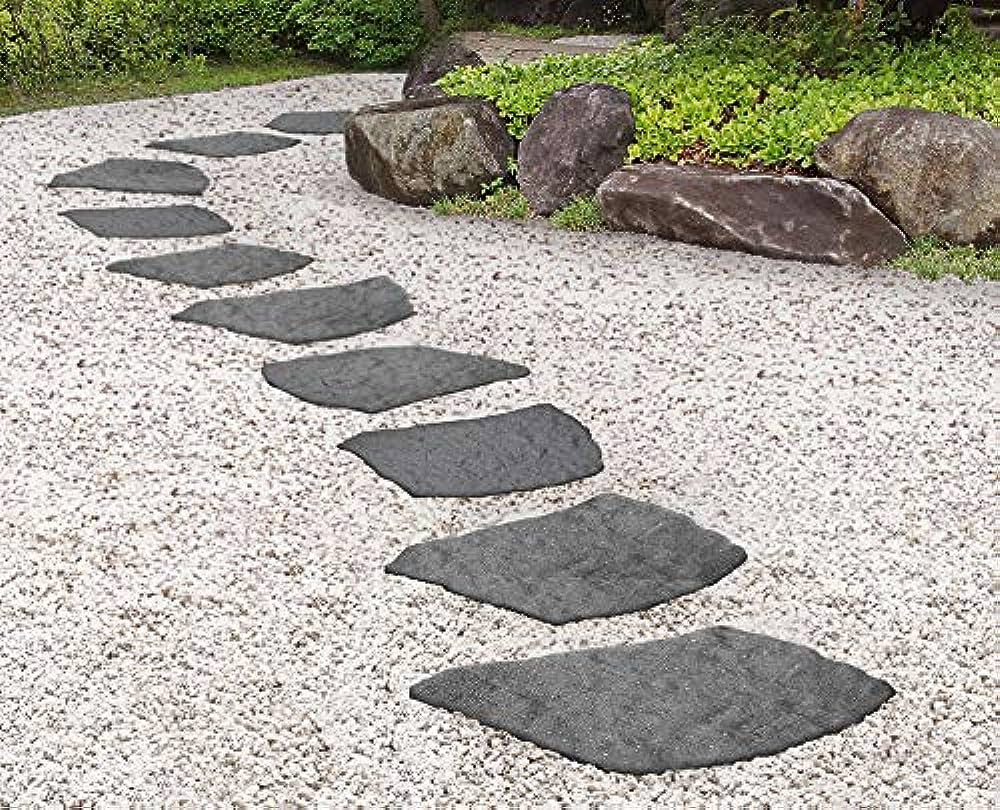
Alternatives to rubber stepping stones
As you could see, overall, rubber stepping stones are not a very good idea.
There are much better alternatives in the market, just as cheap upfront, that can last for years on end with a fraction of the maintenance investment you would have with rubber stepping stones.
Your best course of action is to hire a professional hardscape contractor you can trust around your area and ask for some better options according to your specific scenario.
We here at S&S Pavers, over the course of our 13 years of experience in the hardscape industry, have been called many times to fix installations involving rubber stepping stones, so we know firsthand the problems they can bring to homeowners.
And if you happen to be around our area, the Sarasota and Manatee counties, in FL, you can contact us anytime to help you with your project!

